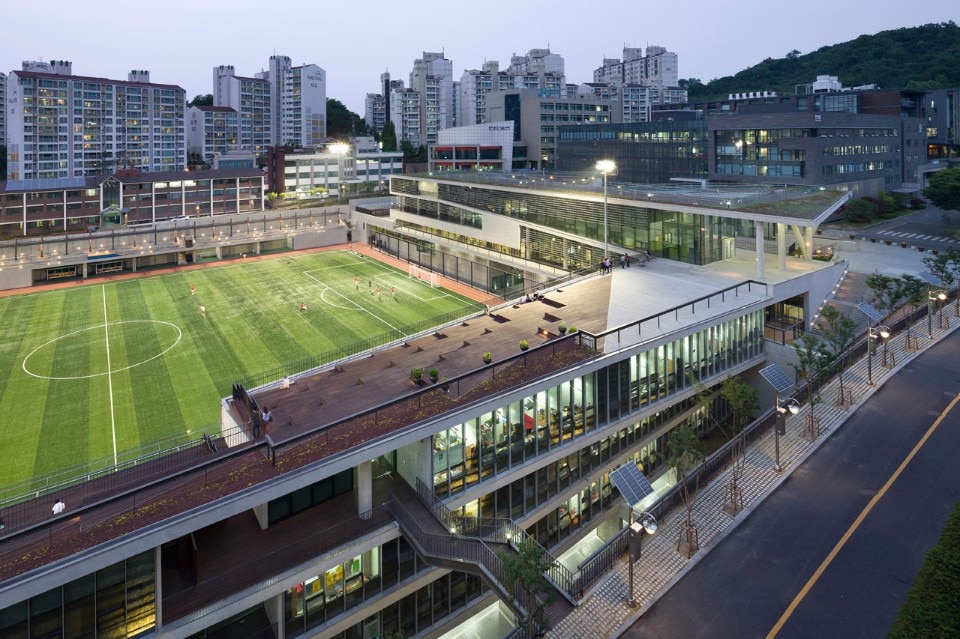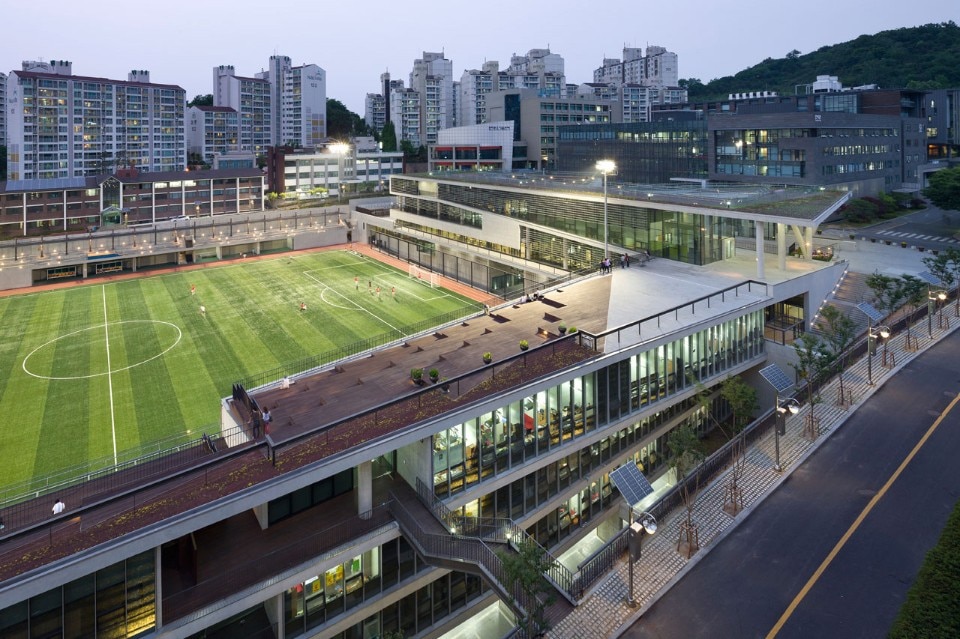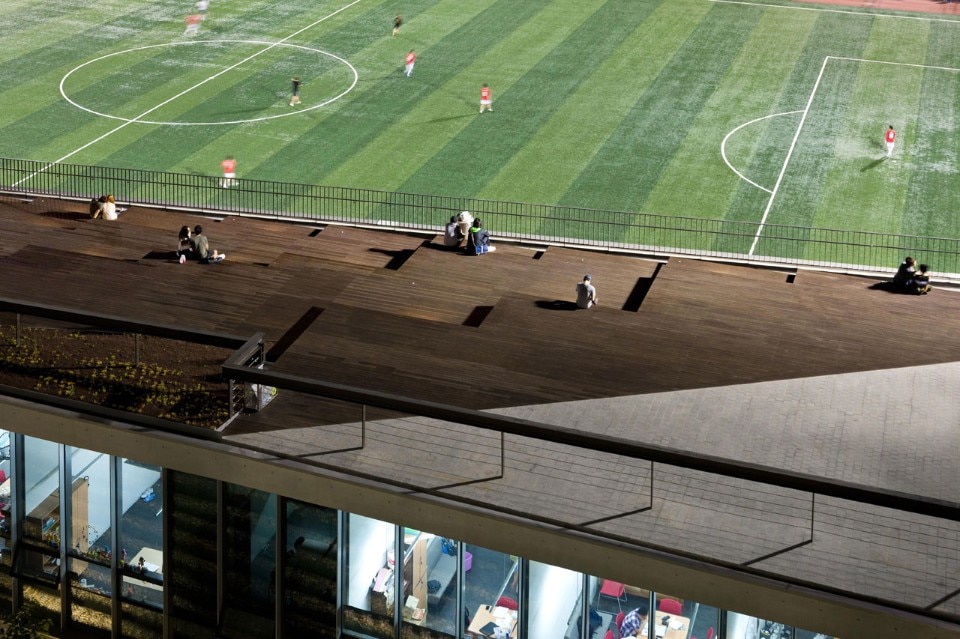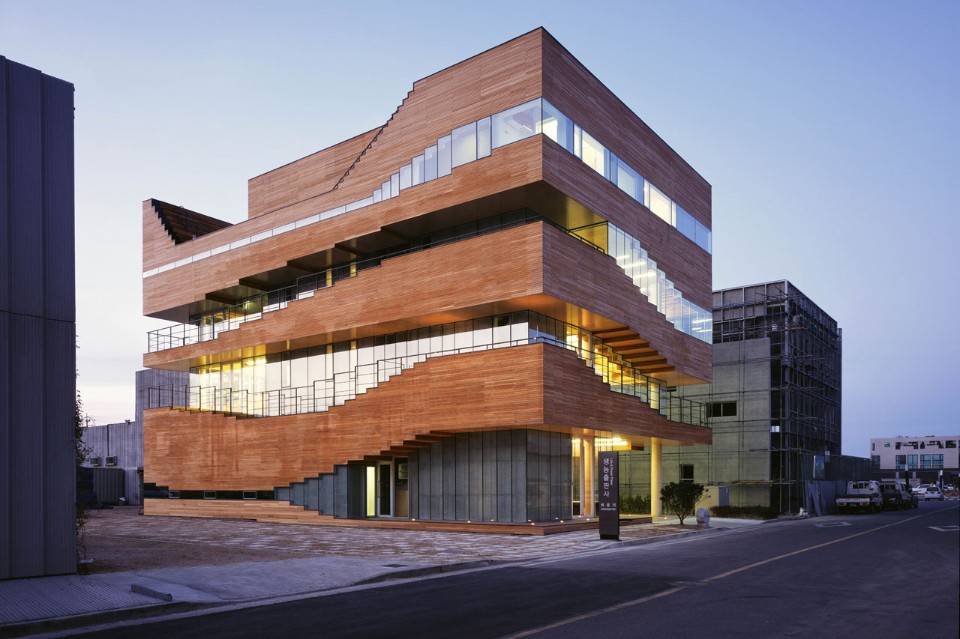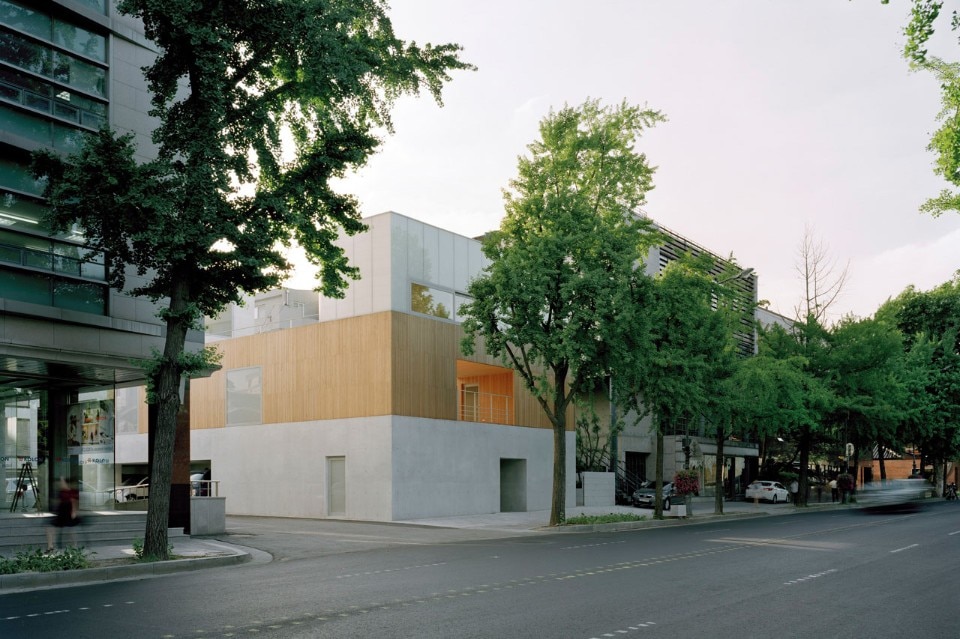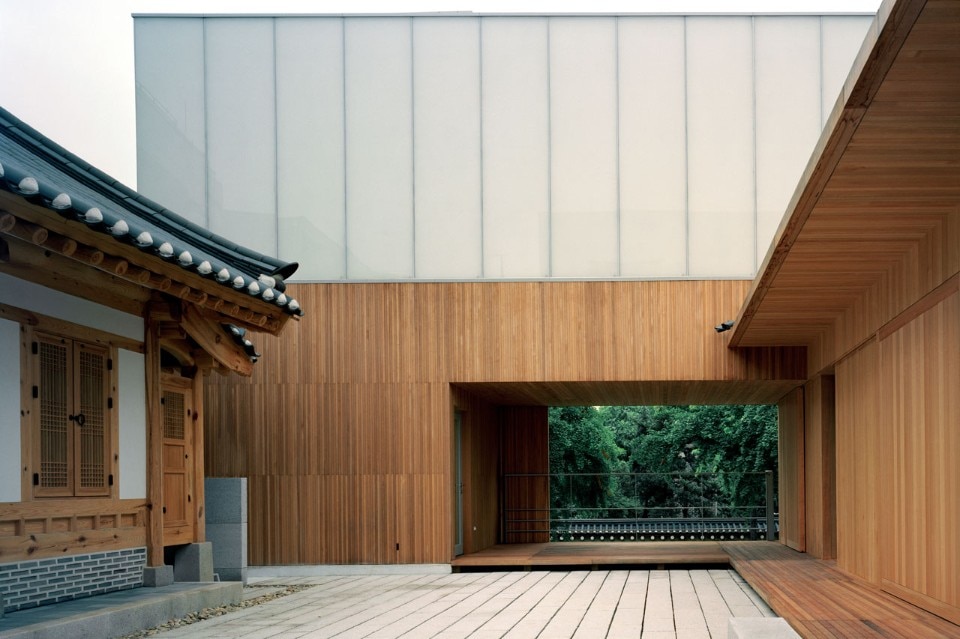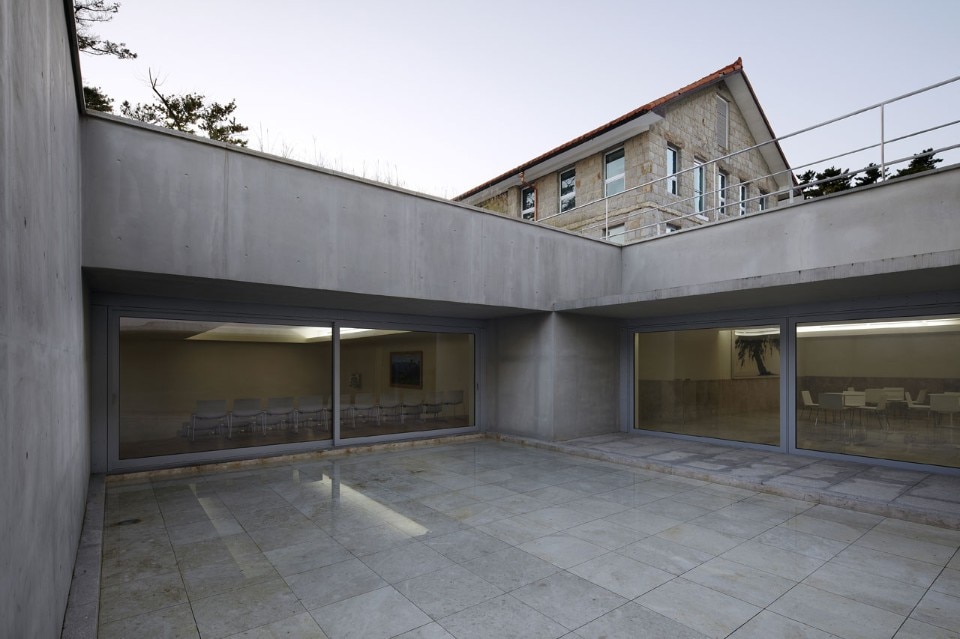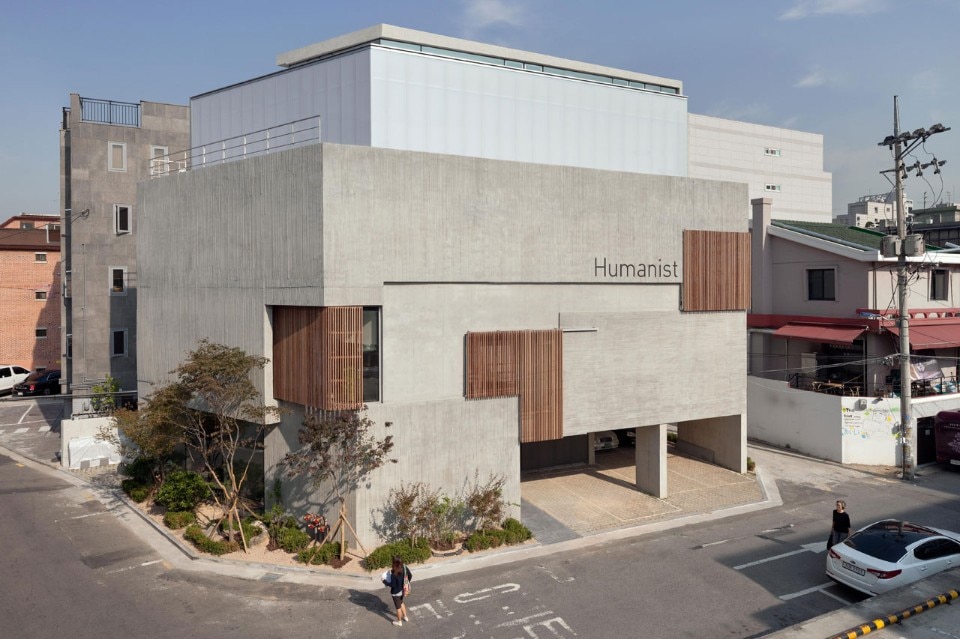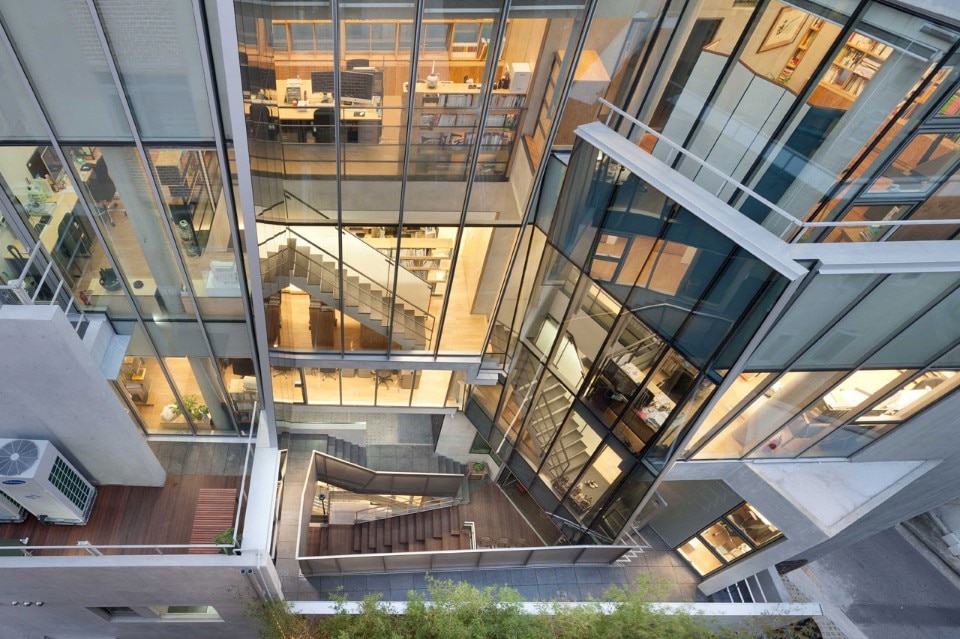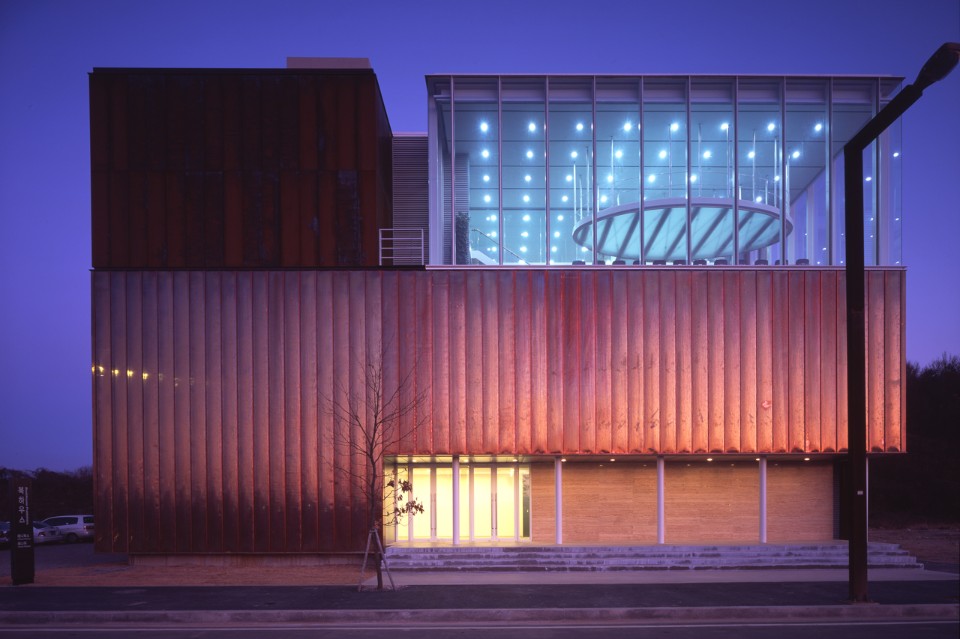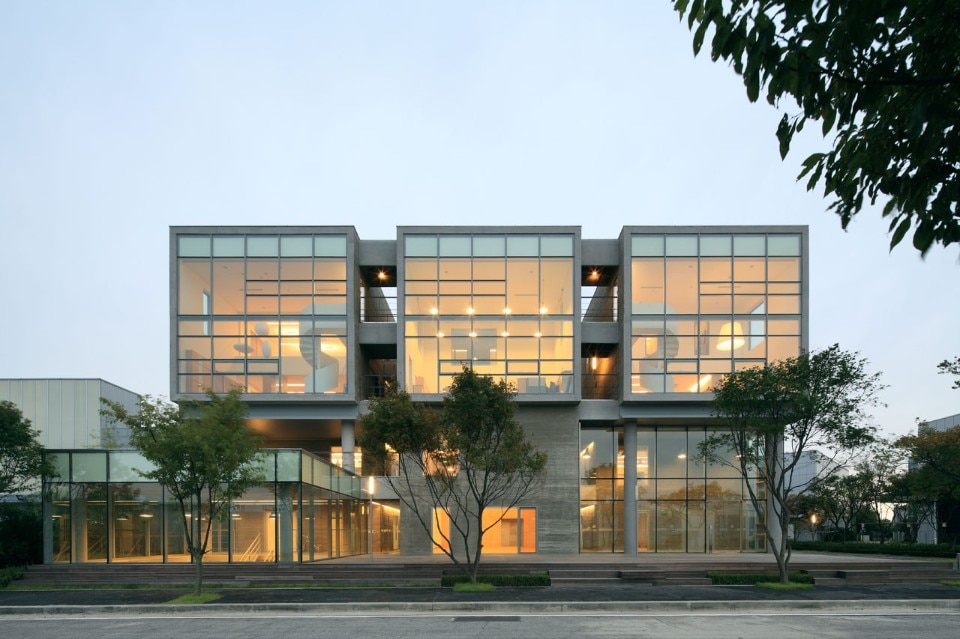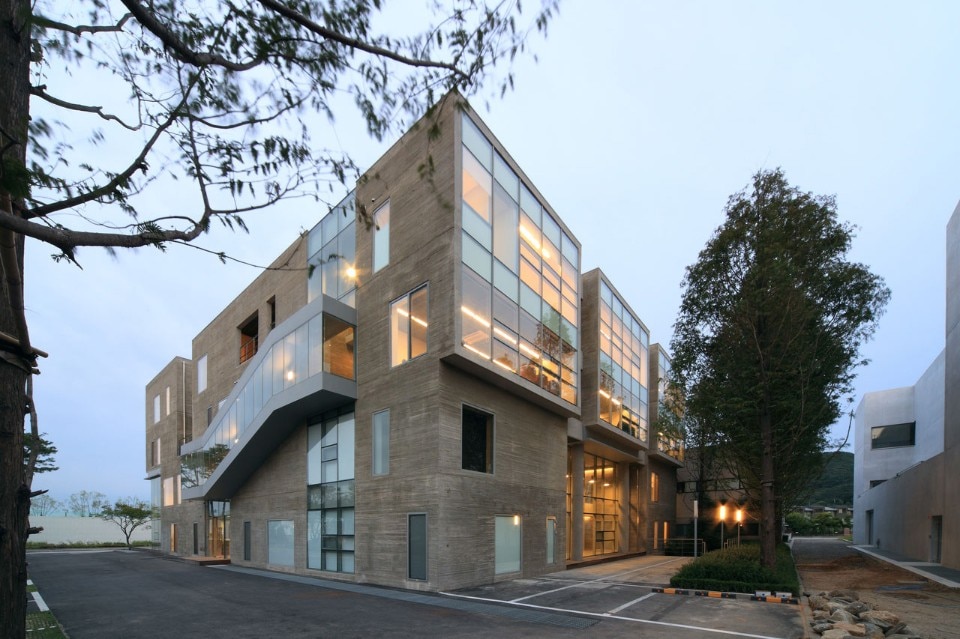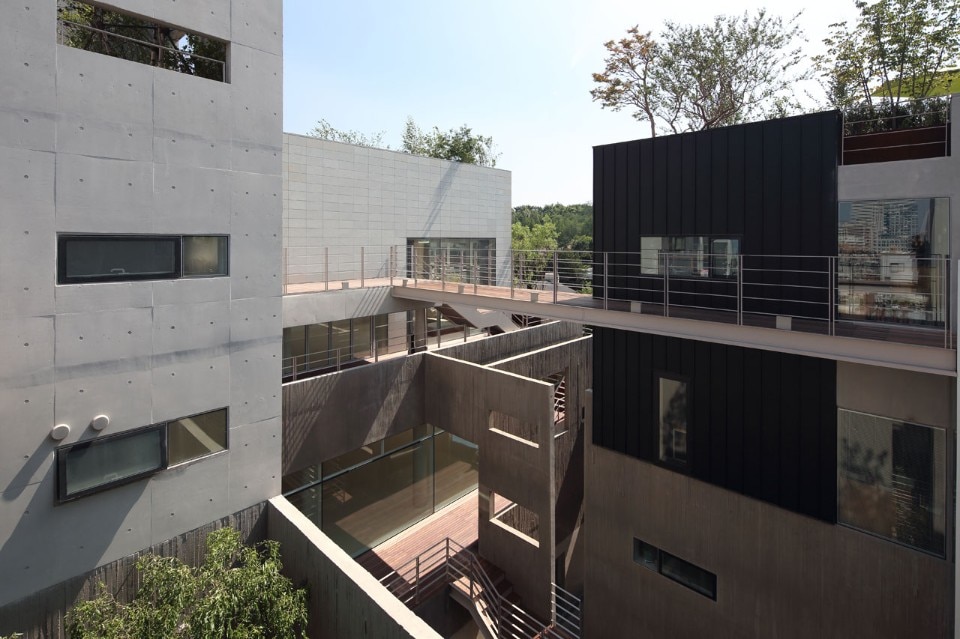In the conversation between the exhibition’s two curators, Luca Galofaro and Choi Won-joon, it emerges that they represent the first generation of Korean architects unconditioned by ideological pressure, meaning that they were free and able to express their individuality fully. Although their work is rooted in local culture, they are aware of what is happening internationally in their field. As architects they were successful in distancing themselves from their country’s preconceived system of references and values to elaborate upon today’s themes by means of diversified and amplified applications of the architectural language.
The exhibition display designed by LGSMA (Luca Galofaro Stefania Manna e Associati) is laid out in a linear route that begins with Choi Won-joon’s introduction to the show in the first room, and continues with six islands, each dedicated to one of the architects.
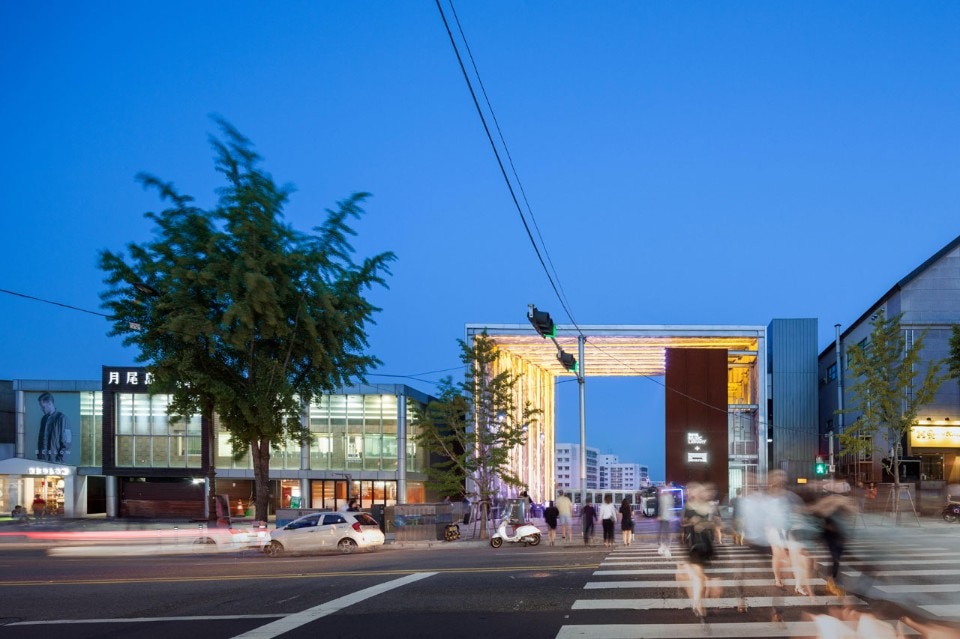
Luca Galofaro: I have always looked with interest to Korean architecture, and have often travelled to Seoul, where I have even designed a very small building. Every time I visited this country I discovered new buildings and felt a strong fascination toward them. I am happy to see that now many of these buildings are exhibited in “Sections of Autonomy”. What kind of influence did these six Korean architects receive from the previous generation? How does the Korean tradition come up in their work?
Choi Won-joon: The issue of tradition relates to the pursuit of identity, and the six architects represent a generation that marked a turning point in this respect. Before them, the modernisation of tradition and the search for Koreanness were prevalent themes in architecture, defining its social relevance. But to the new generation, identity and regionalism are recognised not as a primary aim, but the logical outcome of a practice that carefully responds to the realities of architectural production such as site conditions, weather, technology, economy and regulations.
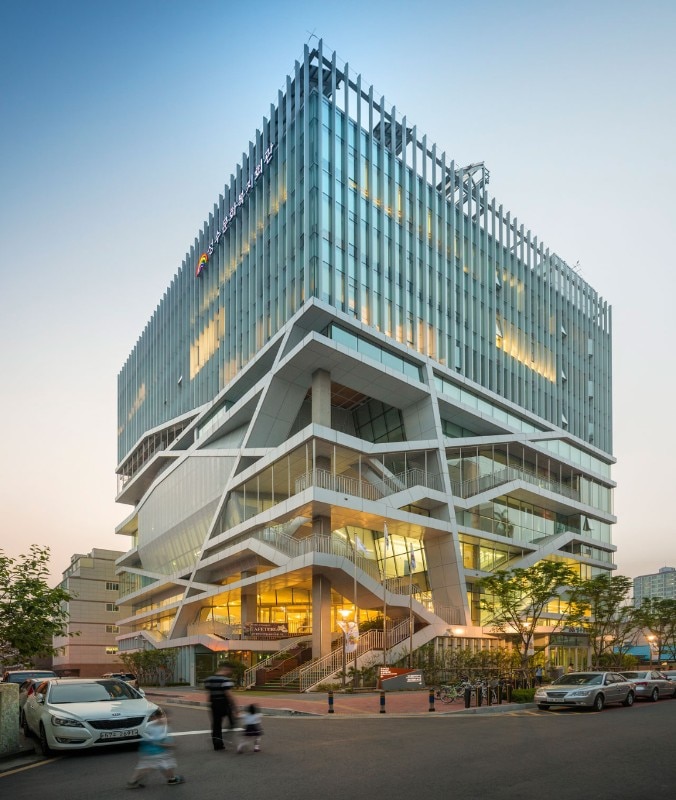
Luca Galofaro: The majority of these architects have studied and worked abroad. How do you think these experiences transformed their idea of architecture?
Choi Won-joon: Spending the formative years of graduate school and early professional training in the US and in Europe certainly put them in contact with the larger world, an experience most of their seniors were denied. This does not mean that they were directly influenced by Western trends, rather it made them cosmopolitans in spirit, comfortable with sharing the international themes, methodologies and languages of architecture, albeit within the conditions set by domestic circumstances.
Luca Galofaro: In Italy, many professionals also work on architectural research, education and dissemination, creating the conditions for discussing our discipline from different points of view. How do Korean architects compare notes? Do they share any common ground?
Choi Won-joon: Throughout the 1990s, young architects including those featured in this exhibition participated in alternative architecture school programmes, which functioned as a laboratory for exchanging experimental ideas not only on education but architecture in general. Today, many of them have since taken positions at universities, but the arena for discussion and debate seems to have largely vanished. Perhaps nowadays, individual ideals, methodologies and tastes are too diverse to form a common ground.
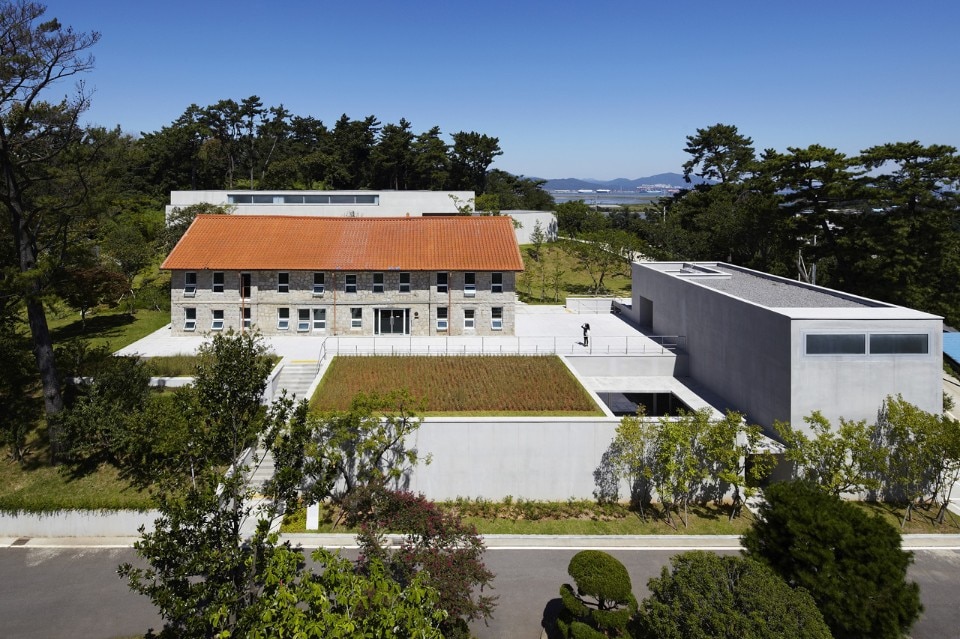
Luca Galofaro: How do contemporary architects engage with the urban dynamics of South Korea? Considering the incredible urbanisation rates, I had the feeling that in Korea architecture is by definition an urban science.
Choi Won-joon: Although the academic and professional disciplines of architecture and urbanism are distinctly separated in Korea, there have been numerous efforts to bridge the gap, especially since the late 1990s. Architects not only took urban context into consideration in their building designs but also led experimental urban design projects. The most notable accomplishments in this respect are Paju Book City and Heyri Art Valley. Devised by a group of architects including this show’s participants, the guidelines of these towns discarded the conventional functional zoning, instead seeking integration of architecture and landscape to preserve the land’s natural conditions. They prioritised shared ideals over private interests.
Luca Galofaro: The Korean landscape is largely represented in the background as much as in the foreground of the exhibitions photographs. Do you believe that the landscape has played any role in the definition of Korean architecture and of the selected architects’ style?
Choi Won-joon: Unlike other major cities, Seoul is marked by the presence of many mountains. If the fundamental role of landmarks is to provide a shared visual experience for a society in search of communal identity, Seoul’s architecture is relieved of such function since nature already provides it. Many believe this is why the city is traditionally without large iconic buildings. Architects still strive to provide designs that blend into the surroundings rather than stand out from them.
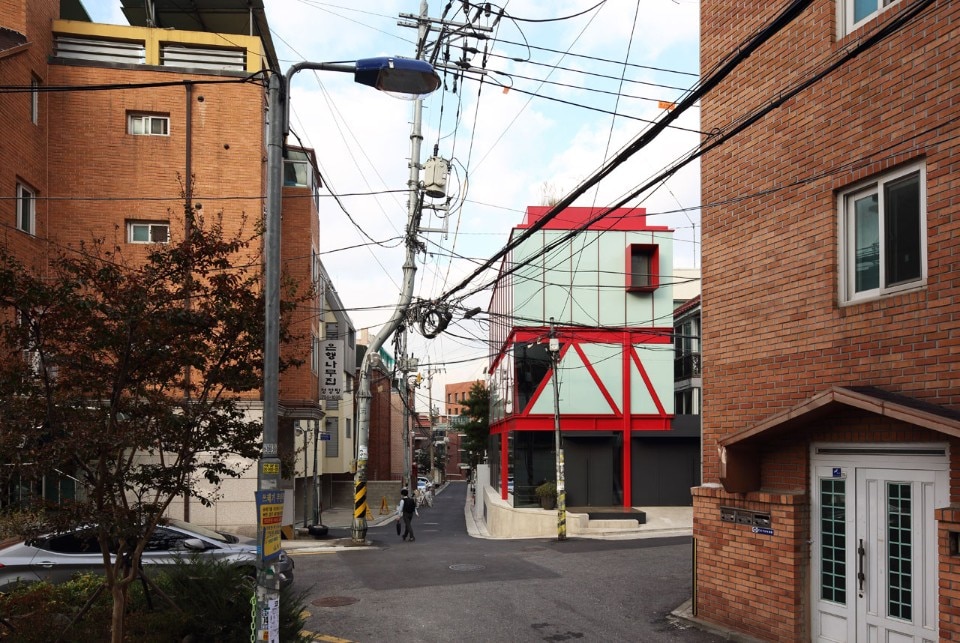
Luca Galofaro: Why is the exhibition titled “Sections of Autonomy?” Which aspects of autonomy do you think that Korean architecture is currently developing?
Choi Won-joon: As a cultural production in modern capitalist society, architecture periodically produces new discourses. At times these discourses become so dominant that they seem to singularly redefine architecture and its social relevance. However, architecture participates in social construction through physical existence, with its own language of form, space, programming, materiality and tectonics. Only when this autonomous realm of architecture is well founded can its new ideas be put into meaningful engagement with reality.
3 – 21 February 2017
Sections of Autonomy. Six Korean Architects
Fondazione Pastificio Cerere
via degli Ausoni 7, Rome
Curators: Choi Won-joon e Luca Galofaro
Exhibition design: LGSMA


